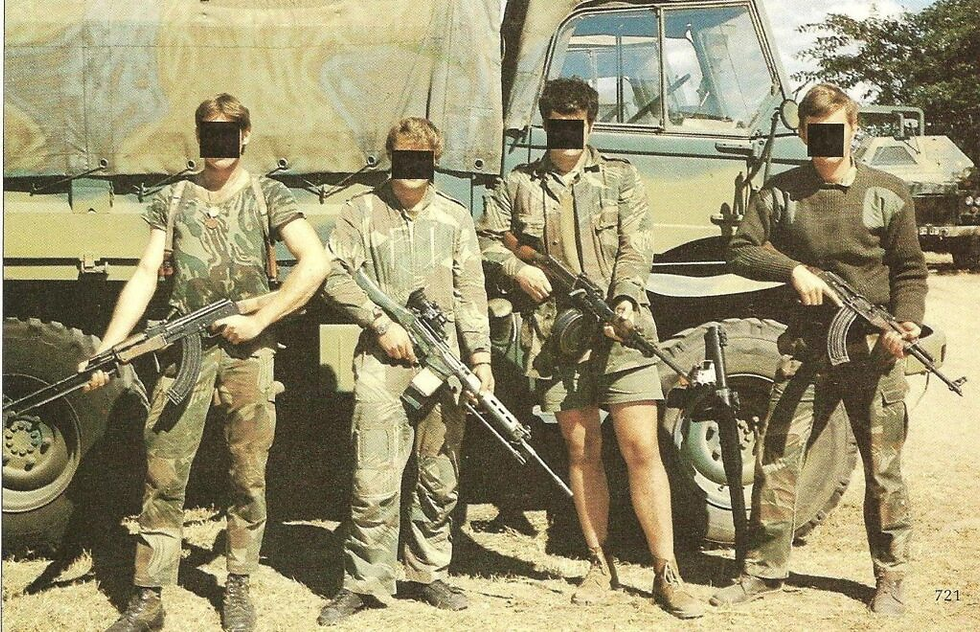The Role of the Selous Scouts in the Rhodesian Bush War
- Владислав Шелковенко
- Aug 4
- 3 min read
Among the most enigmatic and controversial units of the Rhodesian Bush War, the Selous Scouts stood apart in their unconventional tactics, elite training, and deep infiltration operations. Named after British explorer and hunter Frederick Courteney Selous, the unit operated between 1973 and 1980, and was tasked with one of the most complex missions in modern counterinsurgency: to penetrate, disrupt, and destroy guerrilla forces from within.
Their legacy is one of tactical brilliance and moral complexity — a symbol of both military innovation and the ethical ambiguities of asymmetrical warfare.
Origins and Formation
The Selous Scouts were officially established in 1973 under the command of Lieutenant Colonel Ron Reid-Daly, a former member of the Rhodesian SAS. The idea stemmed from the need for a specialized unit that could not only track guerrilla fighters (primarily ZANLA and ZIPRA) but also infiltrate their ranks, gather intelligence, and eliminate them using unconventional methods.
Unlike standard military units, the Selous Scouts were structured around pseudo-operations — a tactic that involved disguising as the enemy to blend in, confuse, and ultimately ambush real insurgents. To do this effectively, the unit required deep cultural, linguistic, and tactical knowledge.

Recruitment and Composition
What made the Selous Scouts truly unique within the Rhodesian Security Forces was their racial composition and mission profile. The unit was racially mixed — in fact, the majority of the Scouts were black Africans, many of whom were former insurgents or captured guerrillas who had been "turned" to work for the government. They were paired with white officers and NCOs, often from special forces backgrounds.
This blending of skills and identities was essential for the pseudo tactics to work. Scouts wore enemy uniforms, carried enemy weapons (often AK-47s and RPGs), and moved through the bush as if they were guerrilla units themselves. Their success depended entirely on secrecy, mimicry, and deception.

Tactics and Operations
The Selous Scouts conducted a wide range of missions, including:
Deep reconnaissance: operating in remote territories, often for weeks at a time, to gather actionable intelligence.
Pseudo-gang operations: pretending to be guerrilla groups to infiltrate or draw out real insurgents.
Targeted assassinations of high-value enemy commanders.
Cross-border raids into Mozambique and Zambia to sabotage insurgent camps and supply lines.
Tracking and bushcraft, often operating without direct support in rugged terrain.
One of their core philosophies was "the only good source of intelligence is live guerrillas" — meaning that capture, interrogation, and exploitation of enemy personnel was central to their work.
Their operations were often brutal and highly efficient. They worked closely with the Central Intelligence Organization (CIO) and other elite units like the Rhodesian SAS and the RLI, but were feared and sometimes resented even within their own ranks due to the secretive and ruthless nature of their work.

Impact and Effectiveness
By the end of the war, the Selous Scouts were credited with contributing to over 60–70% of all guerrilla kills or captures — a staggering statistic considering their small numbers (no more than 1,000 personnel at peak strength). Their ability to operate behind enemy lines and strike preemptively gave the Rhodesian forces a powerful edge in an otherwise challenging guerrilla conflict.
However, this success came at a cost. Their operations often blurred the lines between soldiering and covert intelligence work, and allegations of extrajudicial killings, torture, and manipulation of civilians surrounded their reputation. While some viewed them as heroes, others saw them as agents of repression under a controversial regime.

Disbandment and Legacy
With the end of the Bush War and the transition to majority rule in 1980, the Selous Scouts were officially disbanded. Many of its black members were integrated into the new Zimbabwean army, though not without tension. White officers and veterans often left the country or joined other armed forces abroad, particularly in South Africa and private military companies.
Today, the Selous Scouts are remembered both as one of the most effective special forces units of their time — and as a symbol of how desperate and morally complex counterinsurgency can become. Their tactics influenced future doctrines in special operations, particularly in South Africa, Colombia, and even Western militaries studying asymmetric warfare.

Conclusion
The Selous Scouts operated in the greyest zones of modern warfare — where uniforms, loyalties, and identities were all fluid. In a war where knowledge, deception, and precision often mattered more than numbers, they became the tip of the spear for Rhodesia's military strategy.
While their actions remain subject to ethical scrutiny, their tactical legacy continues to be studied in military institutions worldwide. They are a reminder that in unconventional war, the boundaries between hunter and hunted are never as clear as they seem.



Comments